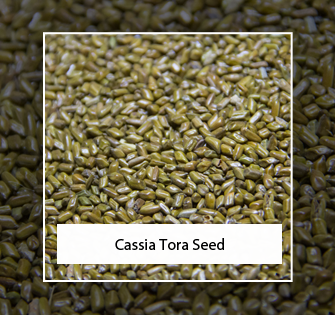All about Cassia Tora, Cassia Tora Meal, and Cassia Splits
Cassia Tora splits are a high-quality food additive that are extracted from the leaves of the Cassia Torea plant. They contain galactose and mannose units and are soluble in hot water. Many products use cassia splits for thickening and flavouring purposes. These splits are often used in beef, dairy, and poultry recipes, as well as dog treats. Read on to find out more about this high-quality ingredient.
General Information about Cassia Tora, and its Applications
Several plant species in the leguminous family have antifungal activity, and Cassia tora is no exception. Its seed gum has been shown to have antifungal activity against soil and common aerial fungi. A significant study from a reliable source revealed that the plant has the potential for use as an eco-friendly alternative to conventional pesticides. Here, we describe the antifungal properties of Cassia tora seed extract and how it works to prevent fungi.
One of the most popular forms of the plant is as a dietary supplement, and in particular, cassia tora seed tea. The seed of the Cassia tora is a salty, bitter, and aromatic plant that is an excellent anthelmintic and laxative. Other applications for this herb include skin and hair care, cleansing the liver, and easing constipation. Its leaves and seeds are also used to treat diarrhoea, constipation, and teething. Ayurvedic practitioners also use dried root paste to treat snake bite and ringworm.
In ancient times, people relied on medicinal plants to treat ailments. Cassia tora was a favourite of ancestors who recognized it as a valuable medicinal plant. The plant is widely distributed in the tropical and subtropical regions and is native to the southern and central parts of India. Cassia tora has a pinnate stem with three leaflets, and bearded flowers that are surrounded by five petals.
The seeds of Cassia tora are reported to have antifungal activity against the malaria vector. More testing is needed to confirm the effectiveness of the plant’s larvicidal activity against other mosquito species and nontarget insects. It is worth noting that this plant can be used at a local level to control the growth of mosquitoes. The production of cassia gum uses the endosperm of cassia tora seeds, which contain polysaccharides. The benefits of Cassia tora are numerous. There is an excellent potential for the plant’s medicinal value.

What are Cassia Tora Splits, and its Uses?
The plant is in the Leguminosae family. The name Cassia Obtusifolia is derived from the Latin words “obtus” meaning blunt and “folium” meaning leaf. This plant grows once a year and bears pods up to 20cm in length. Once the pods mature, the seeds are broken and the cassia torea splits are formed.
Splitting cassia tora seeds is a process that separates them from their shell. The seeds contain the endosperm, ovary, and germ of the plant. The endosperm is responsible for making cassia gum. The two halves are then separated by milling and dehusking. Despite their high nutritional value, the cassia torea seed has many uses in food, medicine, and personal care products.
The splits are a valuable component of many different products. They are used as emulsifiers, foam stabilizers, and thickeners, and are often required in personal care products. In addition to their use in foods and food, cassia tora can also be used as a thickening agent. In some markets, cassia tora splits are called Cassia tora meal.
As a food additive, Cassia Tora splits can be used in a variety of applications. It can be used as an air freshener, skin and hair conditioner, and in household products. Because the seeds contain a bitter flavour, it is often added to food products as a natural preservative. In addition to its medicinal properties, cassia tora is also a great way to improve your vision.
Although the seeds of the Cassia Tora plant are small, they are bold and shiny. Cassia seeds are harvested by farmers in November. It grows in tropical areas of India and is primarily supplied in the state of Uttar Pradesh, as well as parts of Gujarat and Maharashtra. Cassia tora splits are also made from Senna obtusifolia seeds.
Benefits of Cassia Tora Meal
The best way to feed your cattle is to provide them with a high-protein diet. This meal is made of the seeds of the Cassia Tora plant, which have been de-husked to separate the germ. The meal contains protein and fibre. It is highly nutritious for animals, and it has no negative effect on milk yield. Additionally, it is an economical alternative to traditional animal feeds, as it can be given to both cattle and other animals.
Cassia Tora meal is a non-GMO, natural, and approved agricultural by-product. It is produced from the splits of the cassia tora fruit. The meal contains significant amounts of carbohydrates and protein and can be used by feed-stuff manufacturers. It is also completely vegan and vegetarian and is suitable for livestock.
In addition to animal feed, Cassia Tora meal is an excellent natural gelling agent. In addition to boosting animal performance, it also improves the health and wellbeing of animals. It is also used as an air freshener. Its gelling properties have made it popular in the textile, paper, and oil fields. It has been used in food since ancient times. It can be sourced through a variety of sources, including the internet.
The Bottom Line
The powder made from cassia tora seeds called cassia gum powder is used in the food industry for emulsification, foam stabilization, and texture improvement. The natural sourced, food-grade cassia gum is used in animal feeds. It is also used in animal feeds because it is safe for pets and humans. It has a range of uses and is often custom blended to meet the needs of a particular food.

